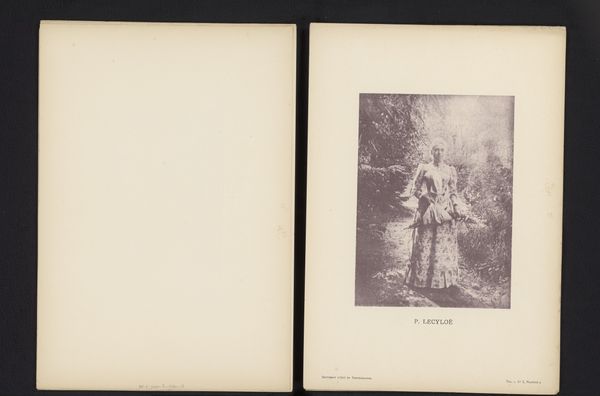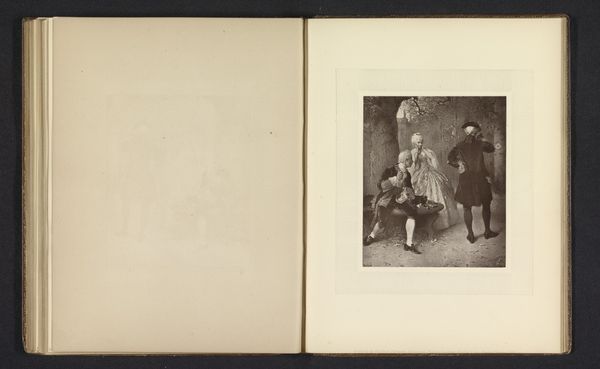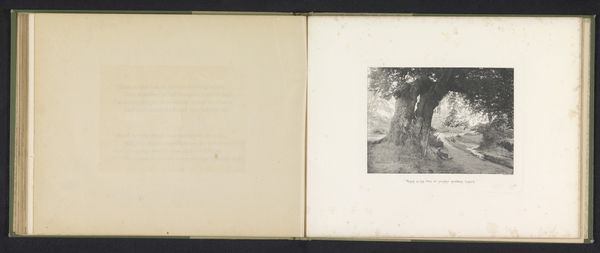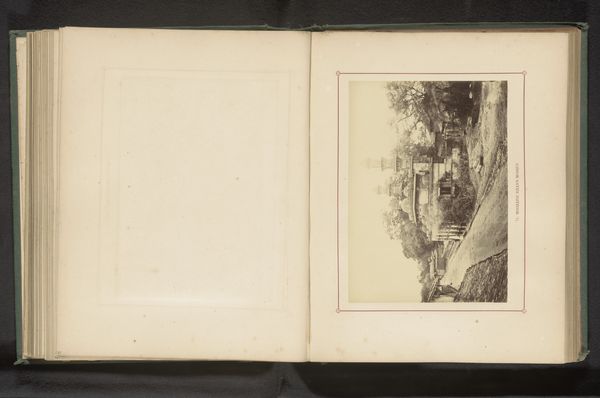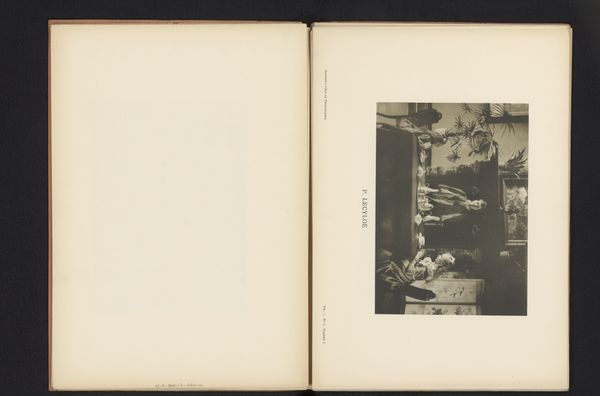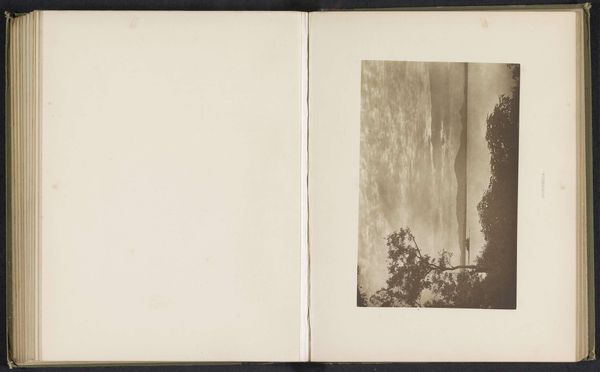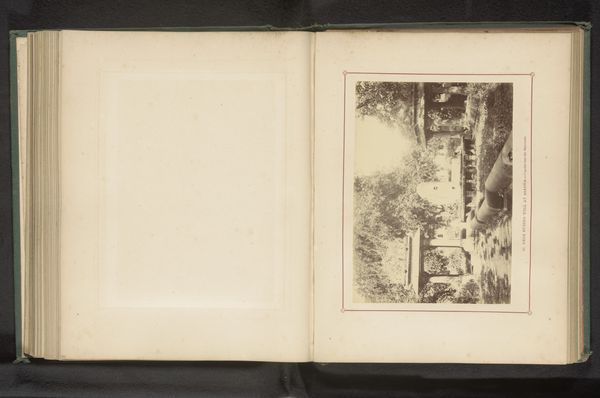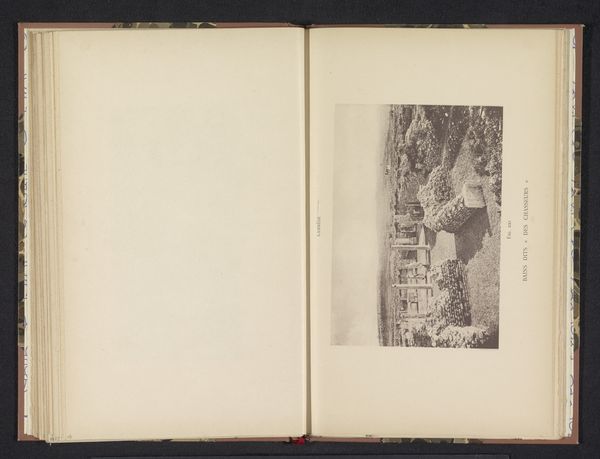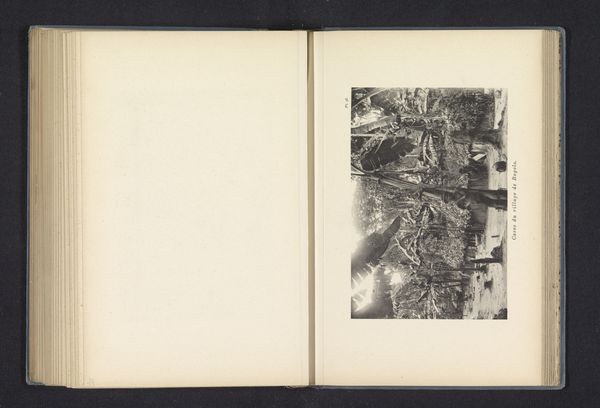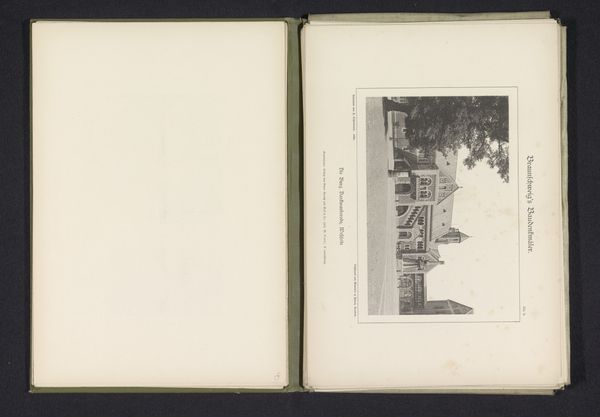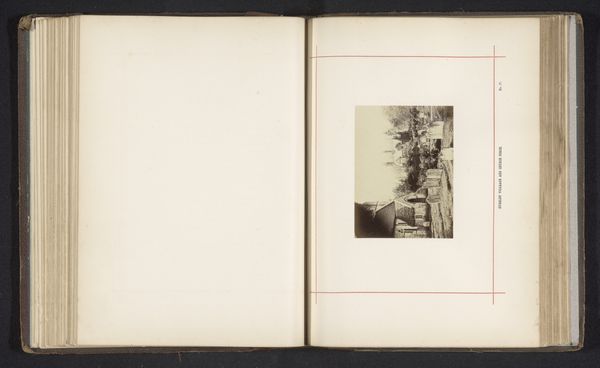
Fotoreproductie van een prent naar een schilderij of prent van een man en een vrouw bij een hek door Edmond Adolphe Rudaux before 1874
0:00
0:00
Dimensions: height 160 mm, width 119 mm
Copyright: Rijks Museum: Open Domain
Curator: Here we have a photographic reproduction of a print or painting, attributed to Edmond Adolphe Rudaux and dating from before 1874. It captures a man and a woman standing by a fence. Editor: It's striking. The light, or perhaps the age of the print, lends a hazy quality. It evokes a sense of melancholy, almost a wistful longing. Curator: Indeed. Note how Rudaux uses a restricted tonal palette. The subtle gradations in value create a pictorial space without resorting to bold contrasts. There's a sense of pictorial unity. Editor: This work gives the distinct impression of Romanticism; how do you think the relationship between man and woman is being portrayed here? I mean, considering this photographic print comes before 1874, how does this fit into a context where gender and power intersect within established social structures? The fence also feels quite significant as a visual symbol of separation, ownership and perhaps the socio-economic disparities within that era. Curator: Undoubtedly. Rudaux constructs a sentimental scene that conforms to prevailing gender roles. The woman looks almost longingly into the eyes of a gentleman, while he leans on his fence as a symbol of wealth, with his weapon not far off. But note, too, the composition—how the fence and figures interlock. There’s a strong emphasis on balanced shapes that supersede purely representational concerns. Editor: Precisely! Though I still see its romantic nature serving to obscure inequalities and power dynamics. We cannot ignore the period context of expanding industrialism, class stratification and patriarchal norms in the West. Do you agree with that point of view? Curator: A compelling consideration. Rudaux frames a narrative that romanticizes idealized versions of masculinity and femininity within confined settings. While the image has its own inherent visual harmonies, your sociohistorical analysis gives us the complete narrative. Editor: Absolutely. Thinking about context enriches our perception of form. Thanks for sharing this analysis with me!
Comments
No comments
Be the first to comment and join the conversation on the ultimate creative platform.
